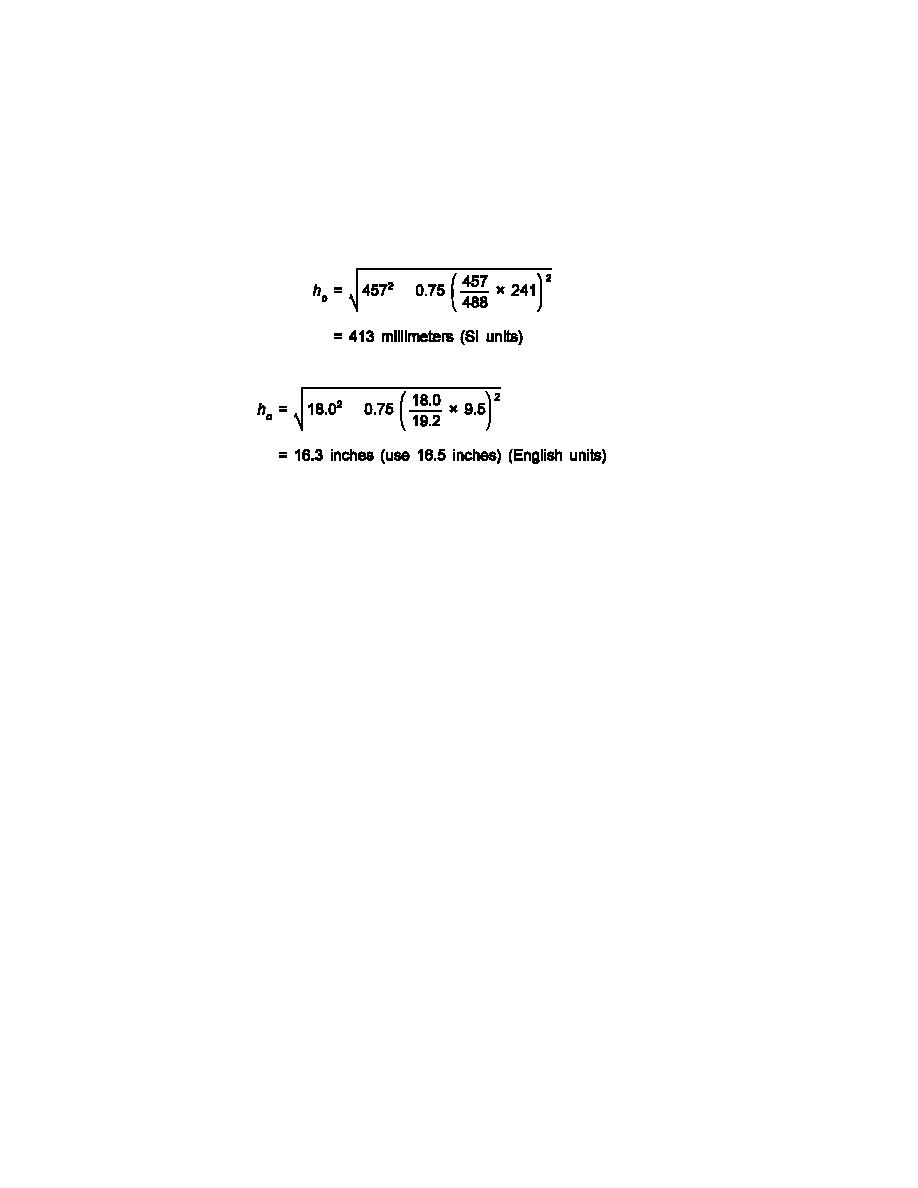
UFC 3-260-02
30 June 2001
(Equation 17-3). The design thickness hd of plain concrete is 457 millimeters (18.0 inches), and
the design thickness he is 488 millimeters (19.2 inches). The value of hE, the thickness of plain
concrete pavement equivalent to the existing thickness of reinforced concrete pavement,
determined from Figure 13-1 using the existing thickness of reinforced concrete pavement of
200 millimeters (8 inches) and S = 0.15 percent, is 241 millimeters (9.5 inches). Substituting
these values in the equation above,
&
&
c. Reinforced Concrete Overlay. A reinforced concrete overlay may be used to strengthen
either an existing plain concrete or reinforced concrete pavement. Generally, the overlay will be
designed as a partially bonded overlay. The nonbonded overlay design will be used only when a
leveling course is required over the existing pavement. The reinforcement steel for reinforced
concrete overlays will be designed and placed in accordance with reinforced concrete slabs on
grade.
(1) Thickness determination. The required thickness of reinforced concrete overlay will be
determined using Figure 13-1 after the thickness of plain concrete overlay has been determined
using the appropriate overlay equation. Then, using the value for the thickness of plain concrete
overlay, either the thickness of reinforced concrete overlay can be selected and the required
percent steel determined, or the percent steel can be selected and the thickness of reinforced
concrete overlay determined from Figure 13-1. The minimum thickness of reinforced concrete
overlay will be 152 millimeters (6 inches).
(2) Jointing. Whenever possible, the longitudinal construction joints in the overlay should
match the longitudinal joints in the existing pavement. All longitudinal joints will be of the butt-
doweled type with dowel size and spacing designated in accordance with Chapter 12 using the
thickness of reinforced concrete overlay. It is not necessary for transverse joints in the overlay to
match joints in the existing pavement; however, when practical, the joints should be matched. The
maximum spacing of transverse contraction joints will be determined in accordance with
Figure 13-1, but it will not exceed 30 meters (100 feet) regardless of the thickness of the
pavement or the percent steel used. Joint sealing for reinforced concrete pavements will conform
to the requirements for plain concrete pavements.
(3) Example of reinforced concrete overlay design. An existing rigid pavement will be
strengthened to serve as a type B traffic area for a heavy-load pavement using a reinforced
concrete overlay. The pertinent physical properties of the existing plain concrete pavement are:
hE = 250 millimeters (10 inches), R = 4.48 MPa (650 psi), and k = 54 MN/m3 (200 pci). The
design (90-day) flexural strength of the overlay is 5.17 MPa (750 psi).
17-8



 Previous Page
Previous Page
